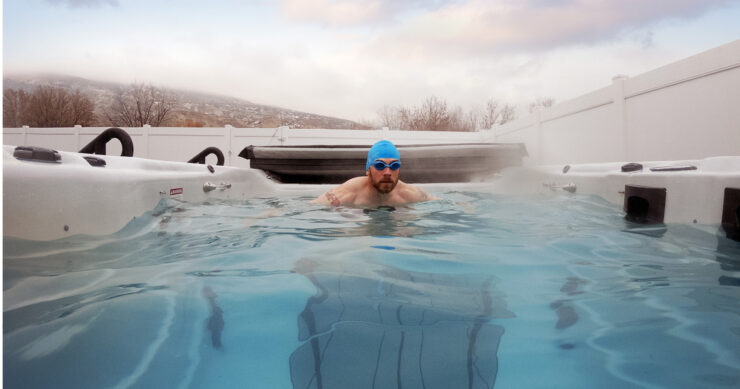Winter can be a challenging season for triathletes to maintain their training. Unfavorable weather conditions can make it difficult to swim, bike, and run. And while there are ways to bring your training indoors, spending hours on the trainer or treadmill can take its toll on your motivation.
However, with the right strategies and equipment, you can stay on track and even gain a competitive edge come race season.
The winter training period is an opportunity to lay the groundwork for a successful race season. From strength and conditioning to improving swim technique, you can use the off-season to build a strong foundation, maintain fitness, and work on specific areas of weakness.
These essential winter training tips for triathletes will help guide your training through the colder months and maintain your motivation for the sport.
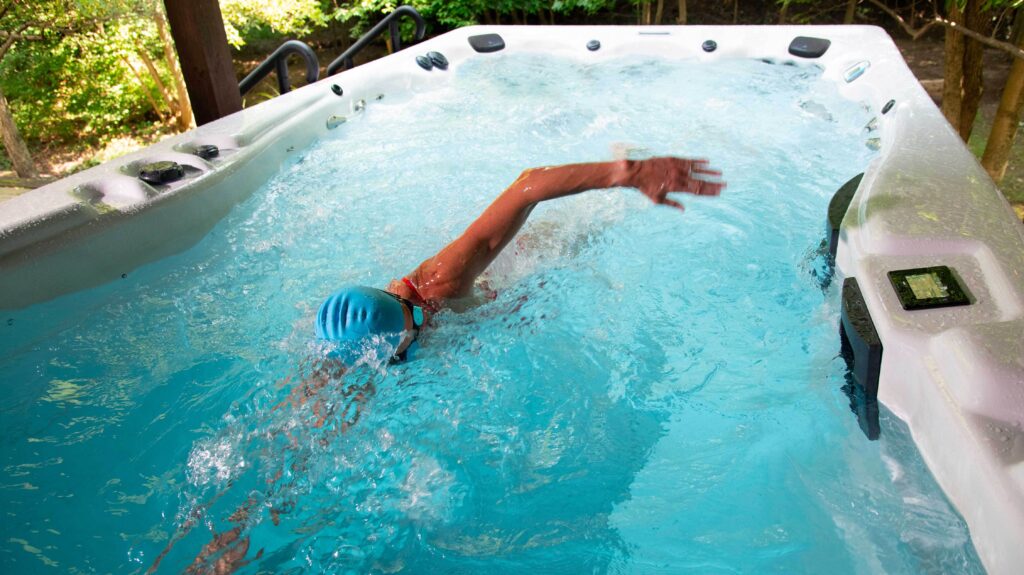
Challenges of winter triathlon training
Winter weather can look differently depending on where you live. But unless you live in the south, you are likely to encounter cold temperatures, rain, snow, and ice. Training outside in these conditions can be uncomfortable, at best, unsafe, or even impossible. Can you imagine trying to head out on your TT bike with inches of snow on the ground?
It can be hard to get yourself amped to complete yet another hourslong trainer ride when you’d rather be on your favorite roads. Bundling up to go to the pool only to get in the cold water … well, that can make the treadmill sound like a run in the park.
But why does winter triathlon training feel so challenging?
Shorter daylight hours
In the winter, it can feel like you’re driving to work in the dark and driving home in the dark. With the shorter days, there’s less daylight available for training, especially for those with busy work schedules. You might prefer to train in daylight for safety reasons and struggle to fit your workouts into your day.
Indoor training monotony
There are days where you can feel like you are going crazy riding on your indoor training or running on the treadmill. When you are training indoors, there’s less to focus on. You aren’t maneuvering your bike and adjusting the gears for the terrain. You don’t have to anticipate traffic nor are you watching out for potholes. The lack of visual stimulation – and amazing scenery — can lead to boredom.
Lack of social interaction
One of the best parts of training can be training with a group or a few friends. In the winter, you probably aren’t going to invite your friends over to ride on the trainer. And you certainly can’t run on the same treadmill together.
More than that, a training partner or group can keep you accountable. When you are scheduled to meet someone to bike, you are less likely to bail on the workout. If you are not able to meet with your friend, it can feel easier to skip a workout or maintain your motivation.
Holiday season distractions
It’s not just the winter weather that can be an obstacle to maintaining your training schedule. With the winter, comes the holidays and its own commitments. From family gatherings to travel, it can be difficult to balance training with holiday festivities.
Uncertainty race schedules
There’s nothing like a race on the calendar to kick your training into gear. A race provides a concrete goal and a purpose to your training. It gives you a sense of accountability, too, because you want to feel prepared on race day.
In the winter, though, you might not have selected your races for the upcoming year or there are months and months away. Workouts might feel more optional or less purposeful than they do during the racing season.
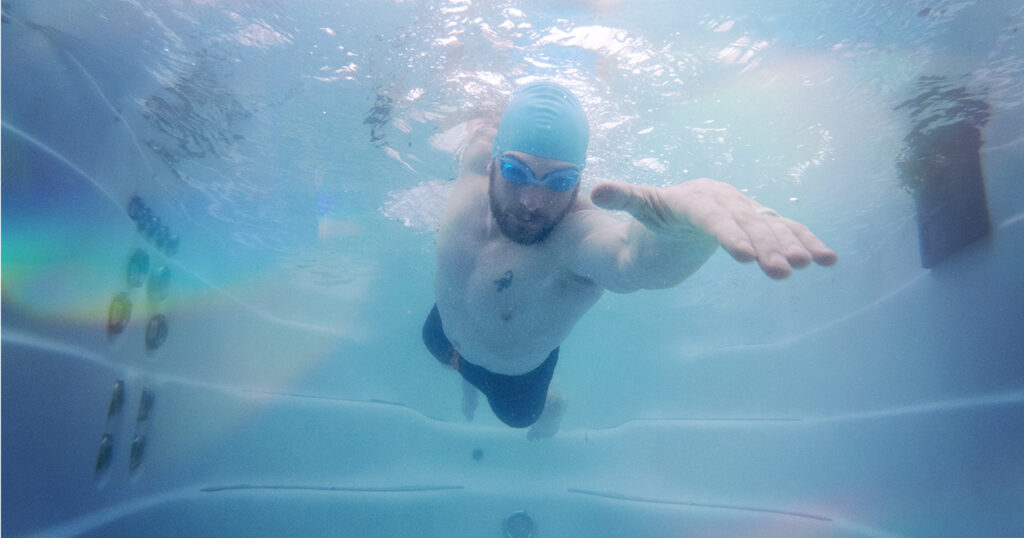
Tips for winter triathlon training
Triathletes can reframe the winter season to feel more motivated and prepared once the weather warms up. The winter training period can be an opportunity to lay the groundwork for a successful race season. Whether it’s focusing on your swim technique or working on your mental toughness, you can emerge from the winter stronger, more prepared, and ready to tackle your triathlon goals with confidence.
Set clear goals
Use the winter months to set specific, measurable, and achievable goals for your upcoming races. Break your training plan into phases and prioritize your weaknesses. Whether it’s improving your swim technique or increasing your power on the bike, having clear objectives will keep you motivated throughout the winter. Use the winter months to research and plan your race schedule for the upcoming season. Register for your target events early to secure your spot and stay motivated.
Embrace indoor training
Winter is the perfect time to shift your focus towards indoor training. This allows you to maintain consistency in your workouts while avoiding the unpredictable weather conditions outside. Invest in a quality indoor bike trainer and treadmill to keep your cycling and running fitness levels up.
Consider investing in or upgrading your training space. Just think about it — would you rather hop on the treadmill in the corner of your basement or in a space with your race bibs and photos of your favorite training spots? You can also mount a television and connect it to Zwift or stream your favorite series for that long ride.
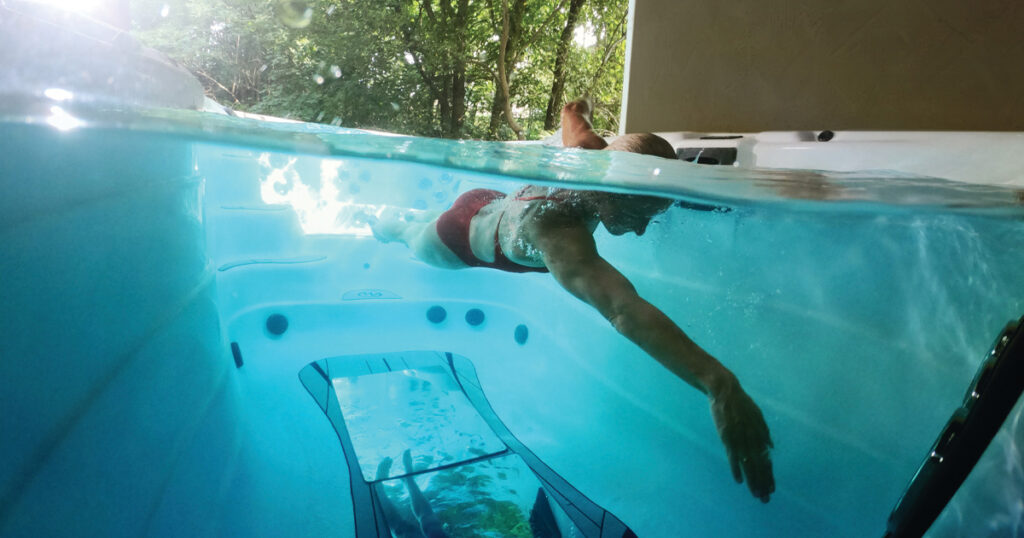
Drill down your swim technique
Many triathletes consider the swim leg of the triathlon to be their weakest discipline. The offseason provides an opportunity to address weaknesses, whether they’re related to form, speed, or endurance, without the pressure of upcoming races. You can even work with a coach or pay for a video analysis to identify areas for improvement.
But if the idea of taking your GoPro to the pool seems a bit “extra,” you can take video of your swim form in the convenience and privacy of your backyard.
H2X Fitness Swim Spas allow you to train, recover, and relax at home. One of the advantages of a swim-in-place pool is the opportunity to get an assessment on your swim technique and stroke. You can use a camera to get underwater video, which you can pass along to your coach. You can also use mirrors on the bottom of the spa to get instant feedback on your technique. No longer do you have to question whether you are crossing over or have a good bend in your elbow — you will be able to see it.
Incorporate strength and conditioning
With less time spent on outdoor training, you can allocate more time to strength and conditioning workouts. Focus on building functional strength and improving your core stability. This will not only enhance your overall performance but also reduce the risk of injuries.
If your body is feeling a bit rough after a season of racing, consider incorporating water workouts into your routine. Water’s natural resistance provides the perfect environment for maintaining muscle or even building it — without the stress that land-based exercises put on your joints. You can use the H2Xercise rowing bars and resistance tubing to target specific muscle groups, such as your back, to build strength.
Plus, water’s natural instability can challenge your balance and stability, engaging core muscles and smaller stabilizer muscles. Try exercises like one-legged stands or standing on your toes in the swim spa to improve balance and reduce the risk of injury.
Sharpen your mental edge
When it comes to reaching your triathlon goals, it’s not just about the meters you swim or the miles you bike and run. You need to be mentally strong to stay focused and maintain a positive mindset — not just on race day but during your training season.
You can use the winter to winter to work on your mental toughness and race strategy. Visualization, goal-setting, and mental exercises can help you develop a strong mental game.
But more and more athletes are embracing the winter cold to boost their mental toughness.
Cold water therapy, also known as cold exposure or cold immersion, can be a valuable tool for building resilience. From controlling your breathing to , many of the techniques that you develop as part of a deliberate cold exposure practice can be used during your sessions.
At-home cold plunge tubs, such as the Michael Phelps Chilly GOAT by Master Spas, can help you incorporate cold water therapy into your routine. And if the idea of going cold in the winter gives you chills, the Alpine and Valaris models also have hot tub capabilities. The Alpine has a heating mode, and the water can reach a temperature of 104 degrees. The Valaris is a contrast therapy tub with a dedicated hot tub to improve recovery and relieve stress.
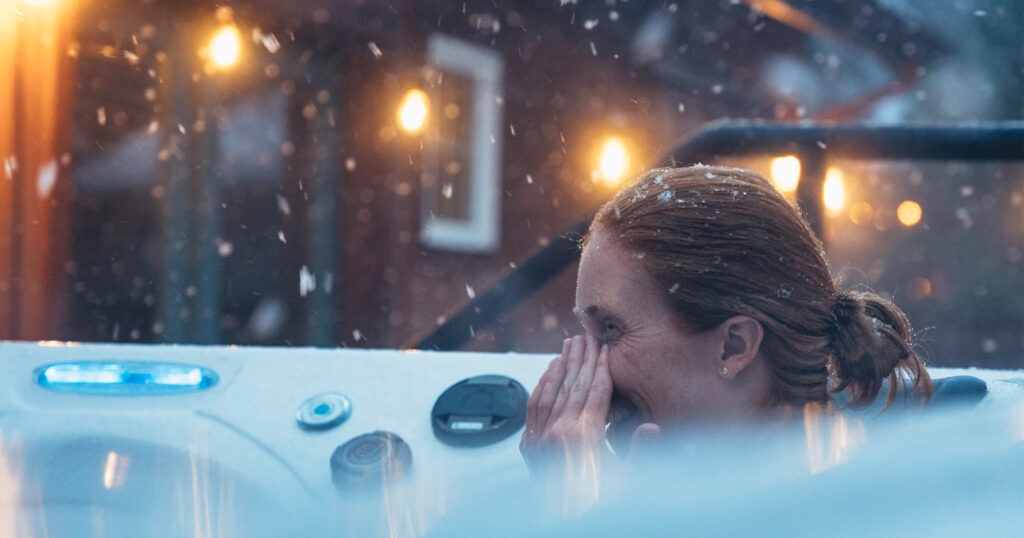
Prioritize rest and recovery
When you spent a year training at a high intensity, it’s not uncommon to feel burnt out. Burnout can really take a toll on your motivation and enthusiasm for training.
It’s important during the winter to balance your training with adequate rest and recovery. Make time to get in quality sleep and even incorporate an extra rest day into your week. While it might seem counterintuitive, sleep and rest can allow your body to absorb the work and help you progress.
If your mileage is lower during the winter, you can use your extra time for recovery. Consider taking a yoga class, booking a massage, or even breaking out that foam roller. You could also turn up the temperature in your swim spa to a soothing 99 degrees and take advantage of the hydrotherapy jets. The warm water will help dilate your vessels to improve circulation, while the jets help relieve muscle aches and tension.
Winter training for triathletes doesn’t have to be a struggle. By embracing indoor training, setting clear goals, and incorporating a swim spa into your routine, you can stay on track and even improve your overall performance. A swim spa offers a convenient and effective way to maintain your swim training during the cold months while enjoying the benefits of hydrotherapy and relaxation.
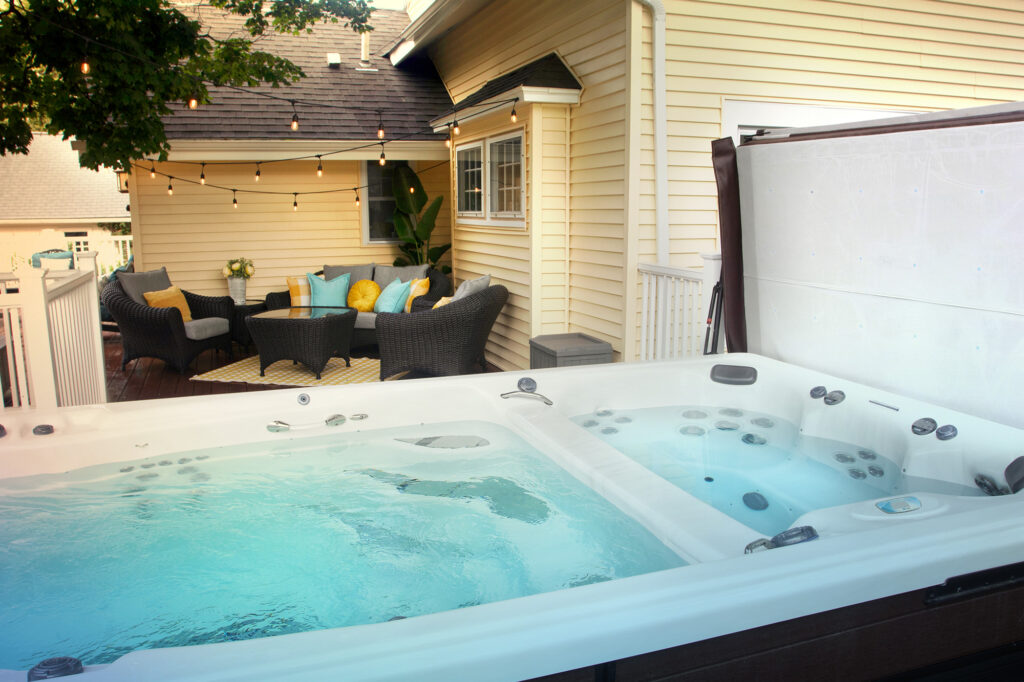
How to buy a swim spa
Do you want to be able to swim, exercise, and relax at home? Having an H2X Fitness Swim Spa by Master Spas allows you to swim on your schedule while adding a fun factor to your backyard. You can click here to find out more about the benefits of hydrotherapy and relaxing in a swim spa. Or, contact your local Master Spas retailer to learn more about swim spa ownership. Wondering how much a swim spa costs? You can request a quote here.

